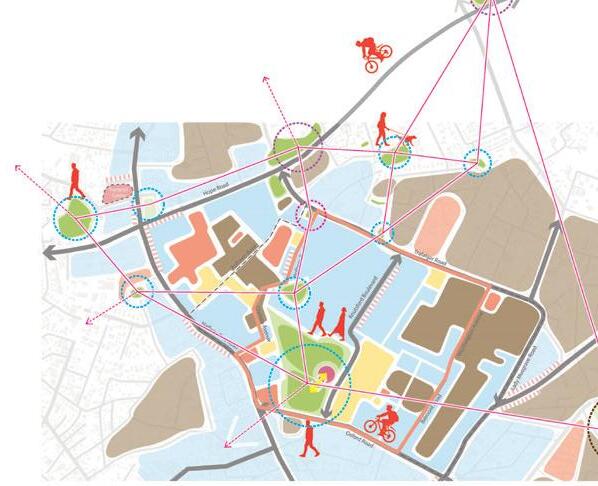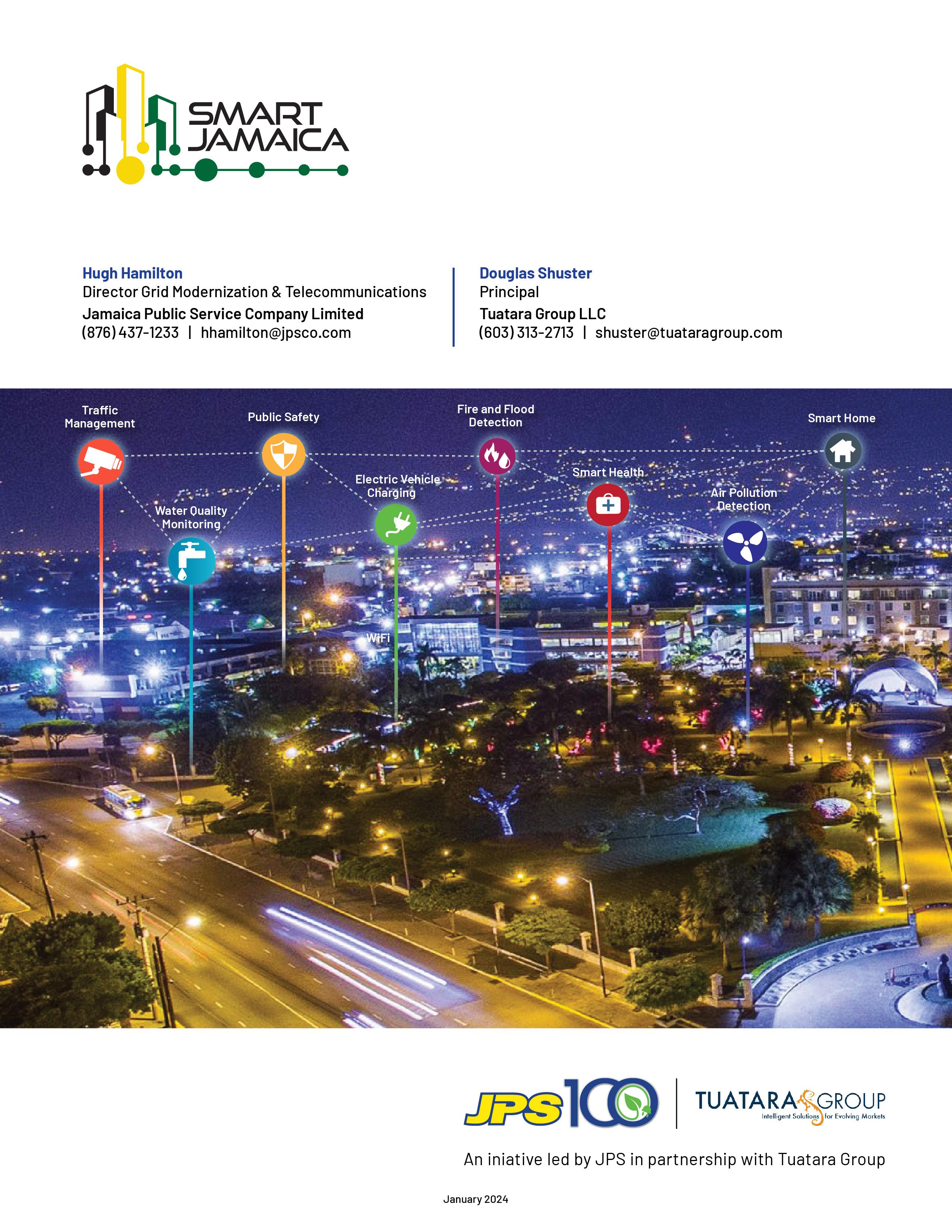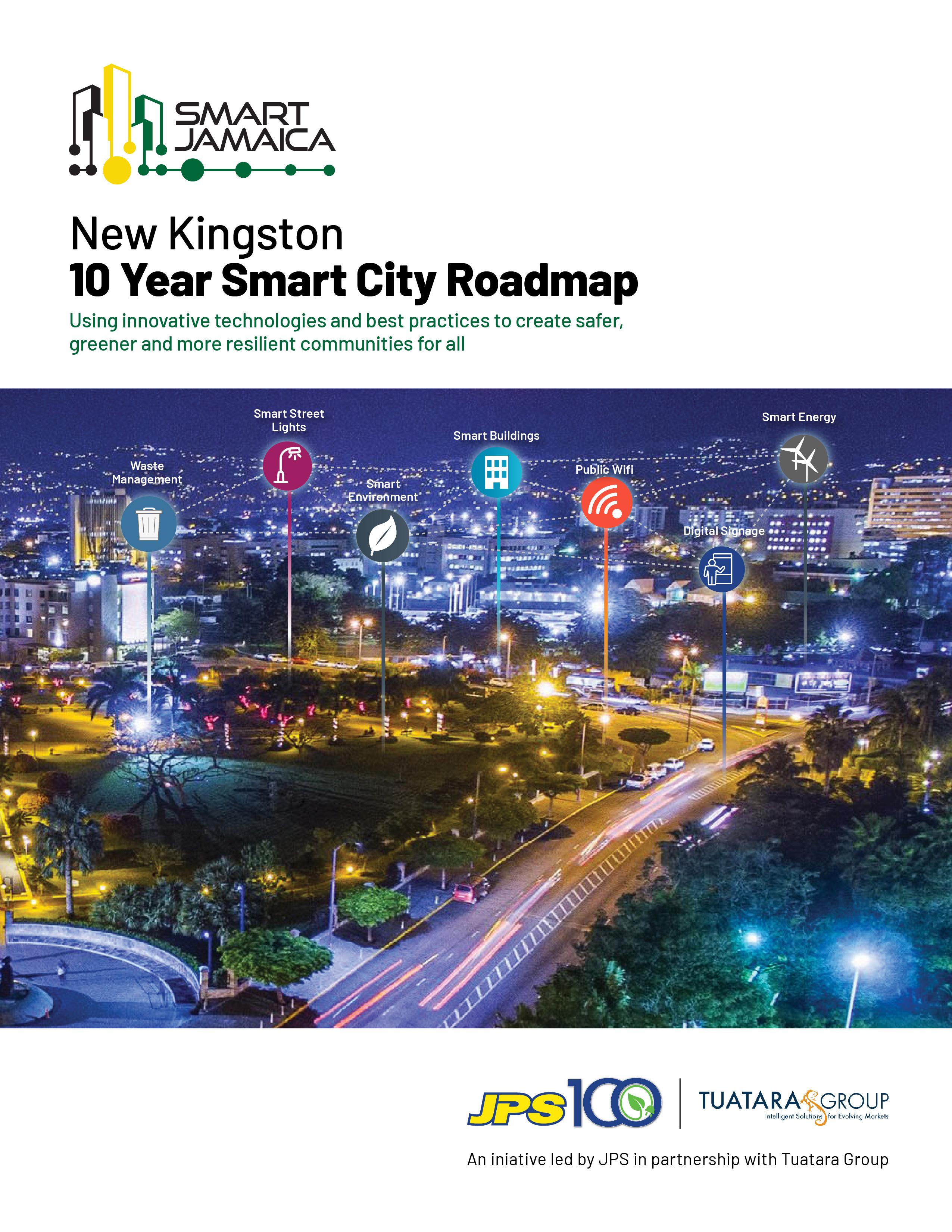

Planning for the New Kingston
Dear Jamaican Smart City Stakeholder:
The Jamaica Public Ser vice Company (JPS) and Tuatara Group are honored to be lead partners in planning for the New Kingston Smart City Demonstration Project. Working with private and public sector stakeholders, we created this New Kingston 10 Year Smart City Roadmap to help guide the deployment of smart city technologies in New Kingston and Jamaica.
We started the initiative with extensive stakeholder consultations to identify key priorities and develop a Smart City Vision to capture what stakeholders want New Kingston to be Then we assessed Jamaica’s existing infrastructure and the potential for launching innovative technologies that could support the Vision We were pleased to find that Jamaica has already deployed, or has plans for, a wide range of smart city technologies, including intelligent transportation, smart security, smart water meters, and JPS’s own smart grid, smart metering, and smart LED street light technologies New Kingston and Jamaica are poised to leverage this existing infrastructure and to deploy robust smart city solutions.
Building on the Smart City Vision, the Roadmap illustrates the potential for future deployment of smart city technologies and also includes a conceptual smart urban design plan for New Kingston to help transform the physical environment and enable the technologies and Vision
The Roadmap is a living document and would best serve Jamaicans if it were updated continuously based on evolving priorities and the ongoing deployment of existing and newly
Jamaica Smart City Forum
We hosted the Forum to present the New Kingston Smart City Roadmap to key stakeholders

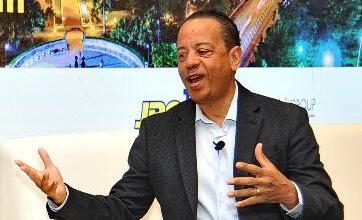

emerging smart city technologies. People will undoubtedly ask when will the New Kingston Smart City Project begin The answer, as with any successful civic project, is dependent on two things: adequate funding and an effective governance framework.
For the long term sustainability of the project, our goal was to find ways for it to be self-funding However, even the most optimistic scenarios for revenue generation demonstrate a need for additional funding from government, private sector, and/or international donors.
We considered several scenarios for governance and, given the innovative nature of the project, we recommend that, in addition to a role for national and local government, there should also be a significant role for the private sector and civic organizations. Defining this governance structure is a critical next step for the project
We are grateful for the hard work and collaboration from the many stakeholders, and for the support from the U S Trade and Development Agency, which partially funded the Roadmap along with Tuatara Group.
Sincerely,

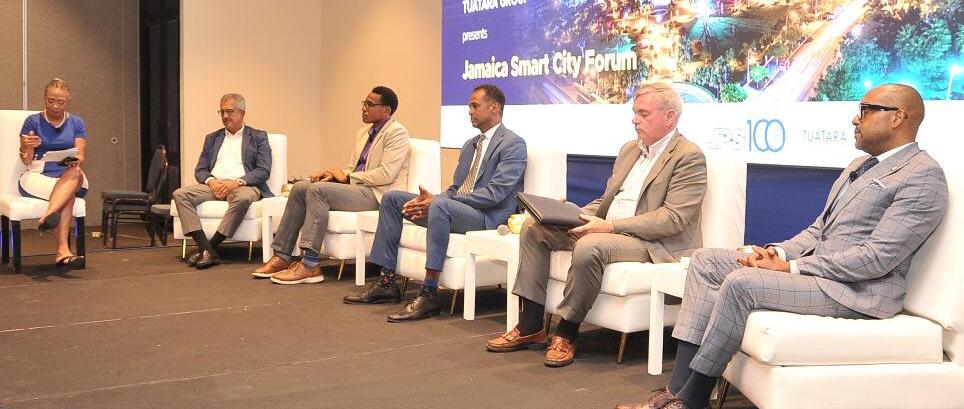

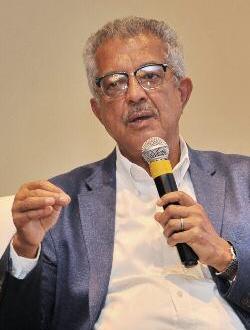
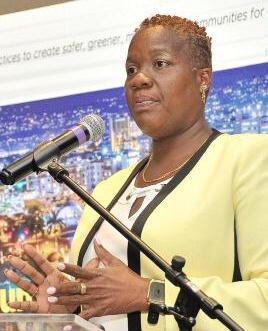



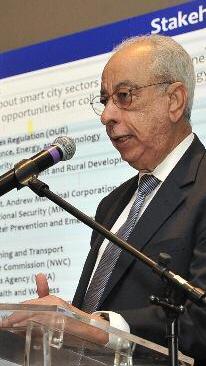
10 Year Smart City Roadmap
Why New Kingston?


New Kingston has a number of features which make it a good location for a smart city demonstration project. It is a relatively dense urban environment with a mix of residential and commercial real estate, has a large concentration of hotels serving a variety of tourists (business, medical, sports and leisure), and has several parks, including Emancipation Park. While the area is not representative of Jamaica socioeconomically, it has well developed and modern infrastructure upon which to build and demonstrate smart city technologies.
What is a Smart City?
Smart cities use technology to improve the efficiency and effectiveness of infrastructure and improve the well-being of citizens and businesses. Smart cities technologies can address a wide variety of sectors such as energy, transportation, water supply, security, emergency response, electric vehicle charging, solid waste, telecommunications, digital advertising, air pollution monitoring and e-healthcare.
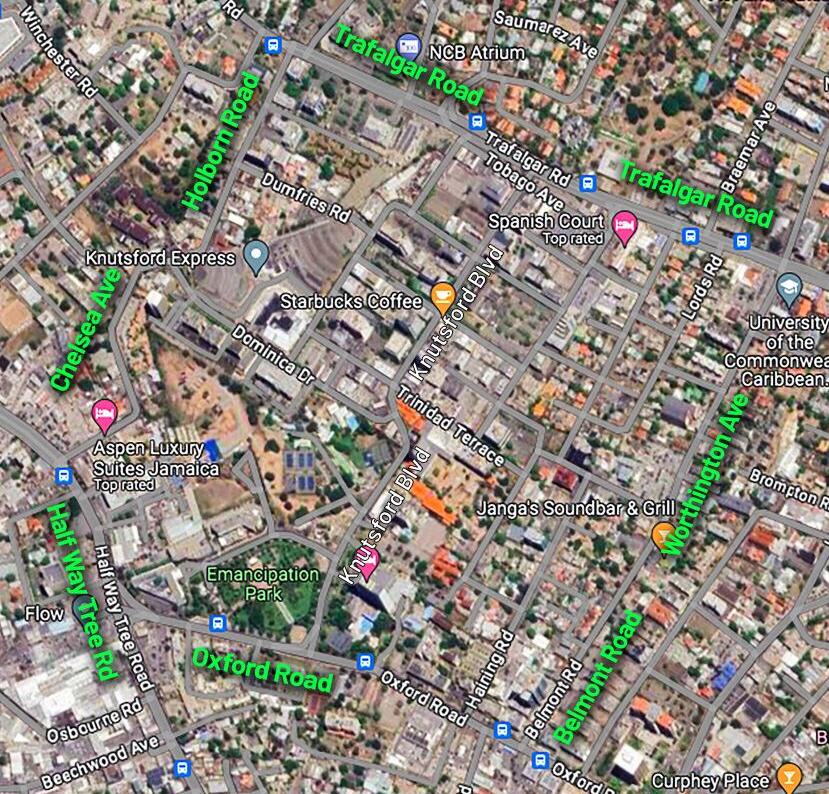
The Process for Creating a Smart City Roadmap
Engage with Stakeholders
We did extensive outreach to learn about projects, plans and perspectives from a wide array of stakeholders, including government, business, and citizens
Perform Sector Analyses
We looked at five key sectors to understand the “ as is” environment
• Digital Services
• Safety & Security
• Water, Environment & Public Health
• Energy & Electric Vehicles
• Transportation
Create a conceptual urban design
We created an urban design to help achieve the smart city vision
G.
Produce a Roadmap
We created a Roadmap that is accessible and can help guide the New Kingston Smart City Project
Create Vision
We collaborated with stakeholders to develop a vision that fits the aspirations of the people who live, work, visit and play in New Kingston
Perform a Gap Analysis
We compared the “ as is” assessment with opportunities for smart city solutions, then screened and shortlisted the most appropriate technologies for potential deployment
Evaluate policy, regulatory, financing and governance issues
New Kingston’s Smart City Vision
A Smart City Vision captures the aspirations of citizens, businesses, and other stakeholders to create a more livable city. The smart city vision prioritizes key issues and challenges to be addressed and provides the conceptual framework that guides development and implementation of the smart city roadmap. The New Kingston Smart City Vision can evolve over time as circumstances and priorities of the stakeholders change.

Capturing the Collective Vision for a New Kingston Smart City
CITIZEN SURVEY
A New Kingston smart city visioning survey was sent out to JPS customers through the My JPS app. Over 2,200 citizens took the survey, providing key inputs to the final New Kingston Smart City Vision Which of the following concepts would you include in your vision for a New Kingston Smart City?
A
A
A
Based on stakeholder outreach, surveys and visioning workshop, the following 5 priorities were identified:
• A safe and secure environment
• A clean and healthy environment
• Modern and digitally connected
• A pedestrian-friendly area with parks and green spaces
• A major hub for shopping, dining, and entertainment

Guides the Roadmap
DER O
UTREACH
MINISTRY OF LOCAL GOVERNMENT AND RURAL DEVELOPMENT STAKEHO
Extensive outreach helped to learn about projects, plans and perspectives from a wide array of stakeholders, including government, business, and citizens.
PREVENTION MERGENCY MANAGEMENT NATIONAL WORKS AGENCY

Smart City Vision Statement
VISIONING WORKSHOP
A New Kingston Smart City Visioning Workshop was held to inform stake-holders about the findings from stakeholder outreach and the survey, to solicit additional input, and to collectively develop a New Kingston Smart City Vision Statement. Additional ideas were solicited through the Visioning Workshop
• Improved lighting and safe spaces
• Improved taxi routing and public transportation
• A senior center with activities
• Improved disabled accessibility
• Better solutions for managing homeless population
• Green buildings

of New Kingston as the premier Caribbean business district by deploying innovative
ces which will help it to become a more vibrant metropolitan area and centre for tourism, nable growth and development, and a safer, greener, more resilient area for all. NEW KINGSTON CIVIC ASSOCIATION
A Smart City is a Safe and Se
Crime is one of the biggest social issues in any major city. In Jamaica, crime is having a devastating social and economic impact on the country. Smart technologies can improve the ability to monitor and respond to incidents; alert citizens; identify, apprehend and convict criminals.
Emergency response includes detection, reporting and response, including fire, medical, and weather related emergencies. Smart technologies can improve the speed and intelligence of response times and save lives.
Current Technologies
For Smart Safety and Security
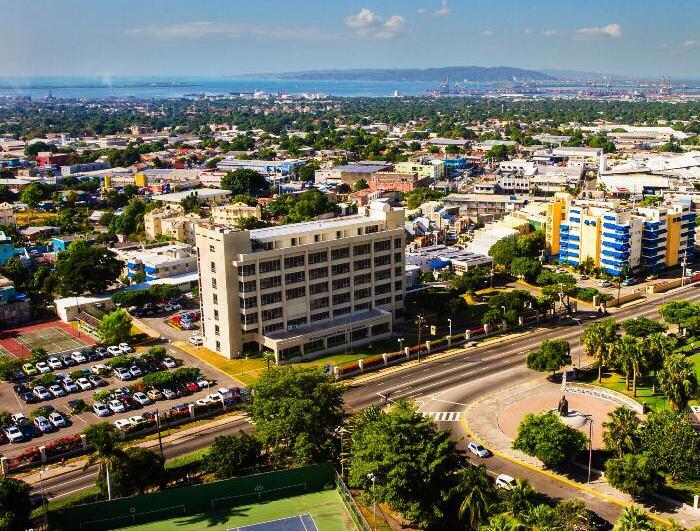

Jamaica Eye
Public private partnership led by Ministry of National Security for national CCTV surveillance system to detect, deter and prosecute criminal activity.
Common 119 Call Center
MSET is working to develop a common 119 call center for emergency response
ODPEM Control Center
ODPEM is upgrading its radio communications, digital signage, cellular emergency messaging, and community vulnerability rankings


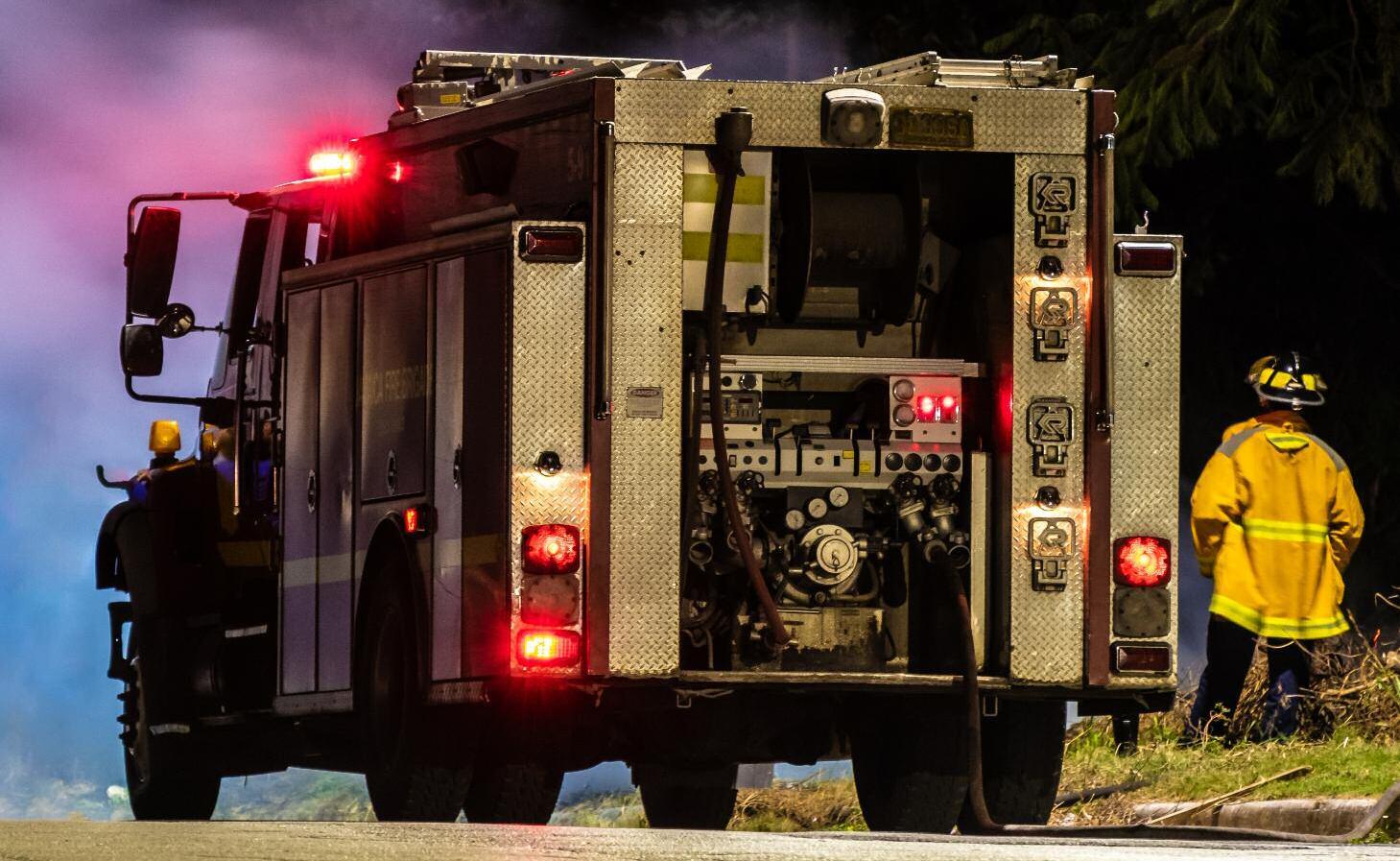

Traffic Signal Preemption
There are plans underway for traffic signal preemption for emergency vehicles as part of the National Works Agency ’ s Jamaica Intelligent Transportation System (JITS)
Ananda Alert
Nationwide system designed to ensure speedy and safe recovery of a missing or abducted child
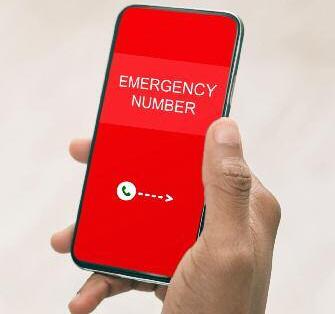

City






INTEGR ATED CONTROL SYSTEMS TR ANSFORM SMART TECHNOLOGIES INTO A NEW KINGSTON SMART CITY
Integration of new and existing smart safety and security technologies creates intelligence across the sector, e.g. high definition cameras with analytics are linked with gunshot detection and Jamaica Eye as well as traffic control operation centers; drones are linked with emergency response and police technologies and applications for rapid response.
Future Technologies
For Smart Safety and Security
High Definition Cameras with Analytics
HD Cameras in public space mounted on streetlights and/or utility poles provide continuous monitoring with edge and/or cloud analytics to support:
• Jamaica Eye and private security
• License plate recognition for improved traffic control and monitoring criminal activity
• Site monitoring, surveillance and access control
• Identification and recognition of abandoned packages
Gunshot Detection
Acoustic detection triangulates location to alert police to gunshots, linked with cameras, audio recording and other sensors to support enforcement and analytics
Emergency Response Systems
• Blue light or emergency response totems allow for immediate geolocated incident response
• Traffic signal preemption allows rapid deployment of emergency response vehicles
• 3D building interior modelling for navigation in emergency response applications
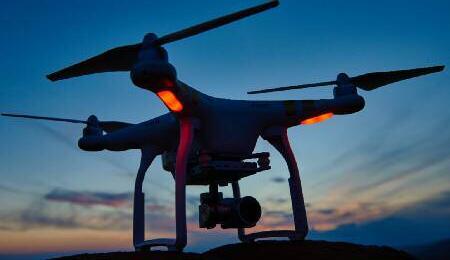

Drones
Drones are used to support police and emergency response Traditional and tethered drones with night vision capability are used for:
• Response to reported incidents and gunshot detection to speed up response time, get eyes on the scene and track suspects
• Survey emergency response operational areas
• Search and rescue operations
• Surveillance for large public events
• Remote inspection of infrastructure
Citizen Safety and Security Alerts
Public is alerted in real time to safety, security and emergency response incidents requiring their attention and action through digital signage, apps, public Wi-Fi and other means
A Smart City is a Conn
Smart Digital Services: Smart city digital services are digital technologies and applications that are used to connect, protect and enhance the lives of citizens in urban areas. These services use IoT sensors, video cameras and other inputs including social media to provide the city management and citizens with constant feedback to make informed decisions. More comprehensive, real-time data gives agencies the ability to watch events as they unfold, understand how demand patterns are changing, and respond with faster and lower-cost solutions.
Current Technologies
For Smart Digital Services
Public WiFi
Universal Ser vice Fund’s Community Wi-Fi Program is free and is designed to increase access to the internet across Jamaica’s 63 constituencies


Jamaica National Broadband Initiative
Jamaica has accelerated the buildout of its national broadband initiative to facilitate the rollout of high-speed Internet access across the island.

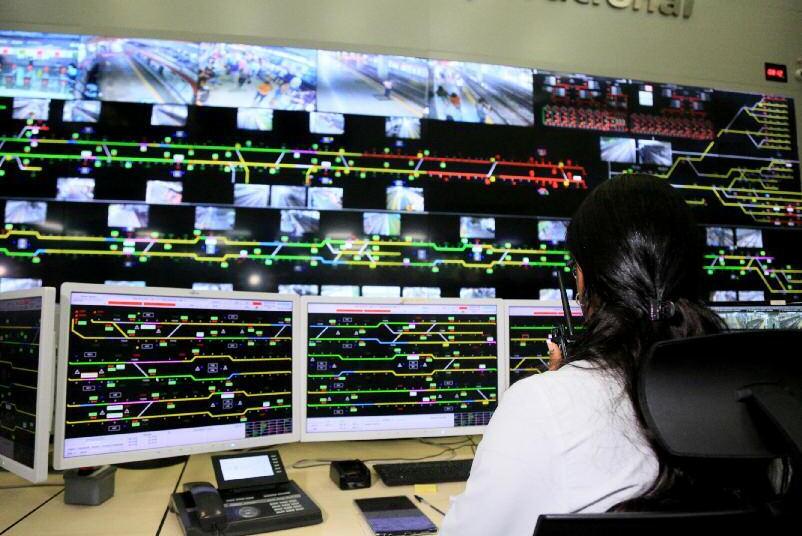




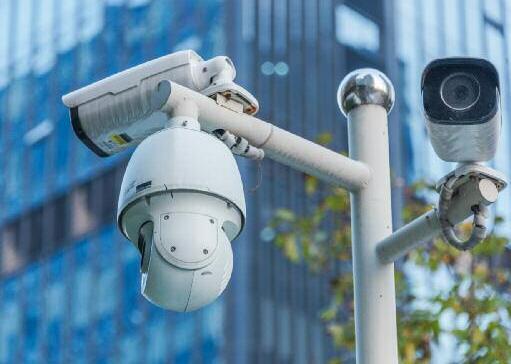
nected City





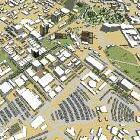
INTEGR ATION AND CENTR ALIZED CONTROL SYSTEMS
Integration of digital services creates connected infrastructure and services, e.g., public Wi-Fi is connected with smart city applications and GIS enabled to provide seamless access to smart city services and digital signage is integrated with intelligent transportation and safety and security alerts to provide real time messaging.
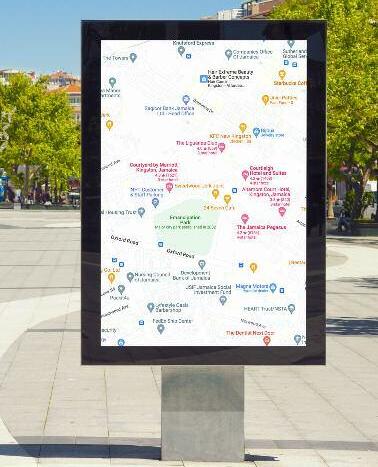

Future Technologies
For Smart Digital Services
Enhanced Public Wi-Fi
Public Wi-Fi will be enhanced to provide robust connectivity and a connected experience by integrating with a host of smart city applications and technologies to provide seamless access to smart city ser vices
Digital Signage
Digital signage and interactive digital kiosks will display video or multimedia content to provide public messaging, wayfinding, and inform citizens about dynamic situations affecting an area such as traffic, parking, public health, security or emergency response.
GIS & Location Services
GIS information links overground or under- ground assets and places of interest and maps GPS locations captured by user ’ s mobile devices, connecting citizens, service providers, police and emergency responders with location related information to support their needs and improve efficient service delivery.




Universal Payment Gateway
A universal smart city payment gateway is a payment system that allows people to pay for various services in a city using a single payment method This electronic payment method includes credit card, debit card, paypal or contactless payments that can be used to pay for things like parking, public transportation, and other city services
Smart City Application
A smart city mobile application will provide information and access to ser vices for citizens, tourists, and businesses. The smart city app can provide access public transportation, parking, weather, emergency response, and other city ser vices as well as access to the universal smart city payment gateway
A Smart City Provides
Reliable and environmentally friendly energy supply is critical to improving the local economy and quality of life in the city and achieving the smart city vision. Increasing renewable energy; increasing electric vehicle penetration; improving energy efficiency for buildings, street lights, and other infrastructure; deploying smart grid technologies to reduce outages and improve customer service; and using demand response technologies to reduce peak power demand are all integral to achieving the city ’s smart energy goals.
Current Technologies
For Smart Energy
Renewable Energy & Battery Storage
Jamaica has installed grid scale wind and solar power projects. Commercial and residential rooftop solar is prevalent throughout the countr y JPS is planning for grid scale batter y storage projects
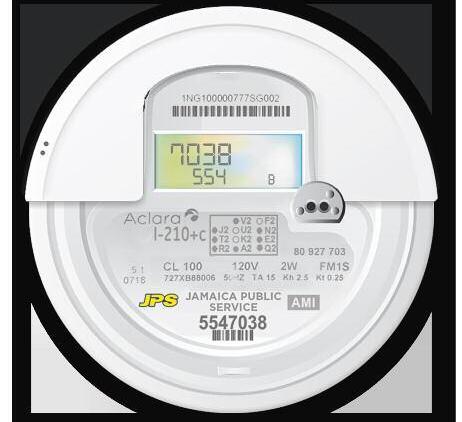
Smart Grid
Smart Meters have been installed nationwide by JPS along with Distribution Automation Switches (FLISR) to provide improved reliability. JPS has also installed a Customer Energy Web Portal and the My JPS customer app
Smart LED Street Lights
Over 110,000 energy efficient Smart LED Street Lights are installed nationwide by JPS.
EV Charging Stations
Level 2 EV Charging Stations are being deployed across the island by JPS, Charge n ’ Go, and Evergo Jamaica JPS has installed a Level 3 Charging Station in New Kingston
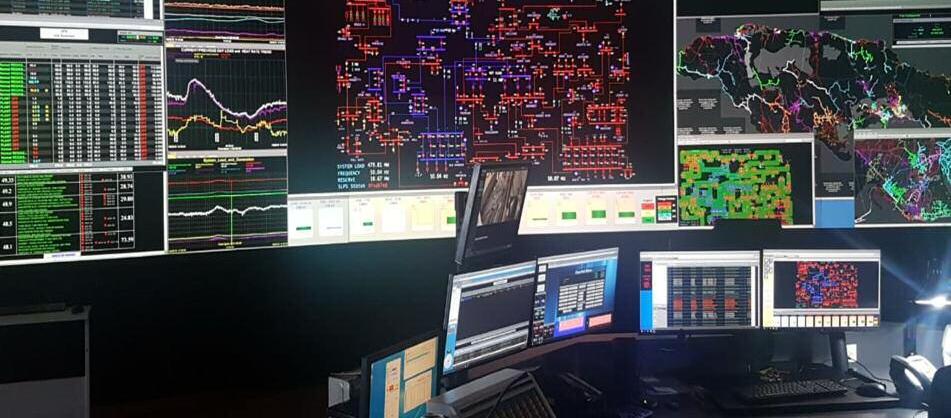

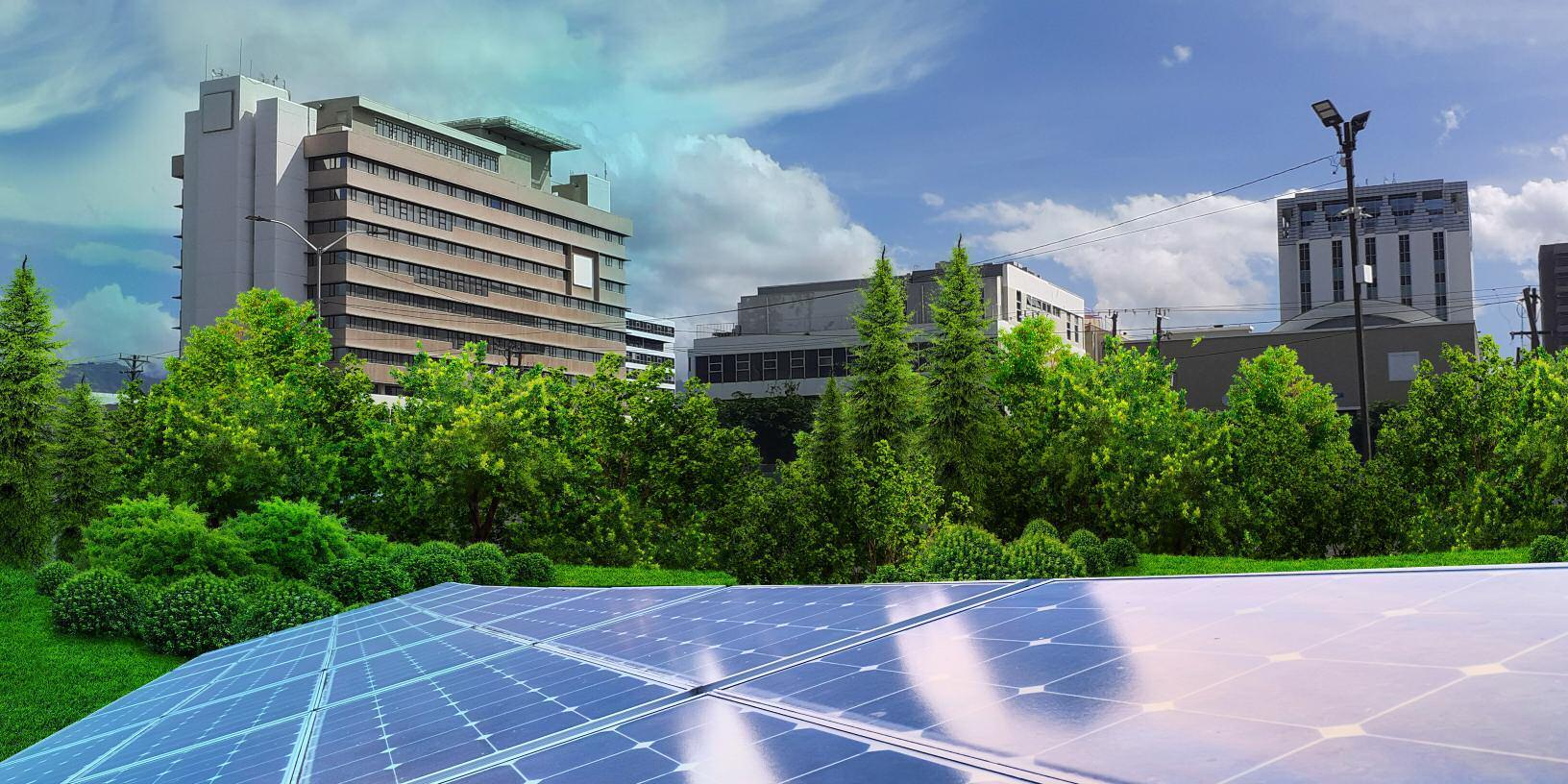

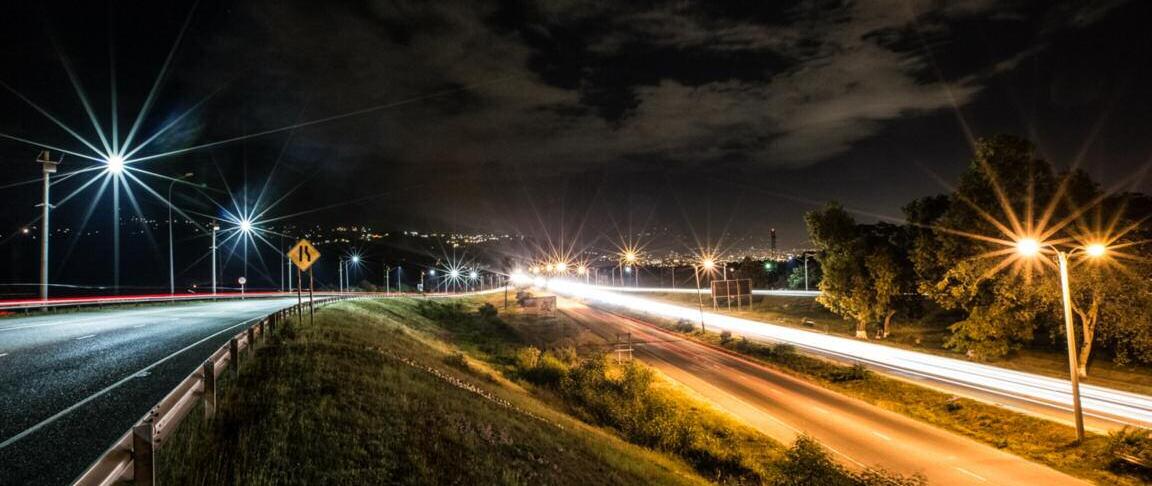
Clean and Reliable Energy




INTEGR ATED CONTROL SYSTEMS TR ANSFORM SMART TECHNOLOGIES INTO A NEW KINGSTON SMART
CITY
Integration of new and existing smart energy technologies creates intelligence across the sector, e.g. vehicle to grid EV charging stations, demand response systems, and battery based microgrids are integrated with JPS smart grid systems to reduce peak power requirements and improve reliability of the grid.
Future Technologies For Smart Energy
Advanced Electric Vehicle Charging Systems
EV Level 2 charging stations can be deployed in parking garages, parking lots, and on streets.
Vehicle to Grid Charging Stations take power from EVs during peak demand and improve resilience of the grid
Demand Response Systems
Integrated building management systems canbe used for demand response to reduce peak energy demand on the grid
Integrated Battery Storage
Battery Energy Storage Systems at the building level or feeder circuit level can provide self islanding microgrids to improve resiliency of the grid



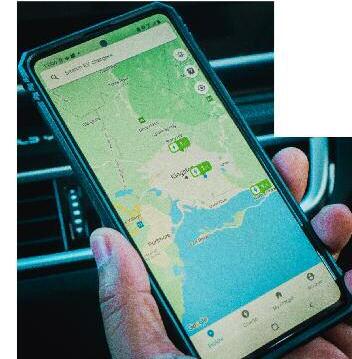
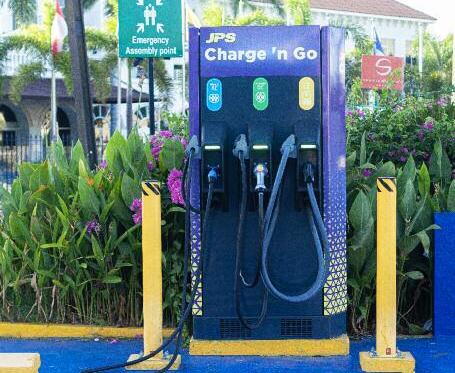

A Smart City Creates a Health

Smart City technologies contribute to development of a healthier environment – cleaner air, water, and soil –which in turn contributes to health of the city ’s population by reducing air and water borne diseases. Public health is made more efficient and effective by improved data collection, communications, and delivery of medical services.
Current Technologies
For Smart Environment and Public Health
Air Monitoring Network
Jamaica has developed strategies to monitor and control air pollutants and greenhouse gases since the early 2000s, including an ambient monitoring network According to latest published data, the countr y has 62 air monitoring sites, mostly at bauxite mining sites, which measure total suspended particulates (TSP), PM10, SO2, NO2, CO and O3


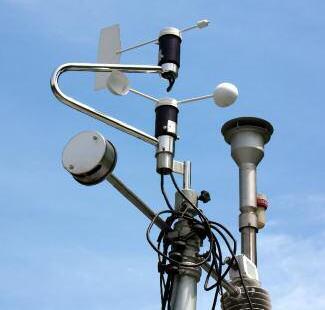
• Non-Revenue Water Loss Reduction and Energy Efficiency – National Water Commission (NWC), in partnership with Miya Jamaica, is implementing the Kingston and St Andrew Non-Revenue Water Reduction program, reducing non-revenue losses from 70% to 40% in some areas
• Energy Transition – NWC has installed pumps with variable frequency drive motors to reduce energy consumption and is incorporating solar PV into its facilities

• Smart Meters and SCADANWC began installation of 450,000 smart water meters in 2018. The program is implemented in phases and according to NWC will continue nationwide.
• Digital Transformation –
NWC has moved to a cloudbased architecture addressing challenges with billing and outdated hardware and software. Customers can use the system to track their water usage and even check for leaks
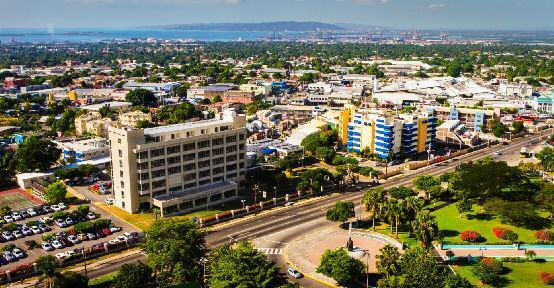




Smart Waste Management
• Citizen Reporting Mobile App - Jamaica’s National Solid Waste Management Authority (NSWMA) has launched a mobile app to report uncollected garbage, dumping and littering throughout the countr y


hy Environment




INTEGR ATED CONTROL SYSTEMS TR ANSFORM SMART TECHNOLOGIES INTO A NEW KINGSTON SMART CITY.
Integration of smart environment and public health technologies allows data sharing and intelligent control for a healthier and more productive society. For example, air quality indices and alerts are shared with the public through smart city apps and digital signage; HD cameras with analytics are integrated with waste management apps to identify uncollected or illegally disposed waste and alert authorities; fleet management systems for utilities are integrated with intelligent transportation systems to ease traffic flow and reduce travel time; and utility services share smart technologies and integrate data from other smart city technologies
Future Technologies
For Smart Environment and Public Health


Environment
Continuous Air Quality Monitoring
Smart Air Quality Monitors mounted on streetlights, utility light poles, or other structures provide continuous air quality monitoring (e.g., CO, CO2, Pb, NO2, Ozone, PM10, PM2.5, SO2 concentrations) with cloud analytics to:
• Identify areas with clean air for recreational activities

• Notify citizens of unhealthy emission levels
• Identify pollution sources to help develop governmental policies and develop mitigation strategies
• Develop greenhouse gas emission inventor y and monitoring
Smart Storm Water Monitoring
Smart Sensors mounted aboveground and inside of stormwater and sewage pipes monitor real time conditions such as flows and level and use internet-based analytical tools to:
• Predict street flooding
• Develop preventive maintenance schedule
Smart Public Health
• Smart Lockers - When the medication is placed in the locker, the system sends an SMS message with a unique code that opens the locker.
• Mobile Diagnostics - Portable devices and mobile medical vehicles offer rapid diagnostics and telemedicine ser vices
• Mobile Applications - Mobile health apps allow for decentralization of data collection, dissemination and reporting, and make the patient an integral part of the healthcare value chain.
Smart Waste Management
• Recycling - segregate waste streams for recyclying, reuse, composting and waste to energy
• Green Energy – Transition to EV collection truck fleet and implement waste to energy projects from wastewater treatment sludge and solid waste
• Fleet Management - GIS mapping tools and real time fleet tracking improves efficiency and ser vice deliver y.
• Smart Waste Bins – Solar compacting bins with sensors reduces truck rolls
Water
• Smart Utilities Integration – capture synergies between smart water and smart grid through shared infrastructure and ser vices (e g , GIS, metering, billing, SCADA)
A Smart City Provides Safe and
Smart Transportation creates predictive, proactive, and connected transportation networks with improved efficiency and air quality, saving lives and reducing incidents. It enables the integration of transportation assets, applications, and management centers across all modes of transportation, improving government services, the bottom line for businesses, and quality of life for citizens.
Current Technologies for Smart Transportation
Jamaica ITS (JITS)
JITS (NWA funded) operates in Kingston and is expanding to monitor and manage road networks across Jamaica JITS uses ITS: CCTV cameras, signals to connect road networks, along with real-time feeds for road conditions.


Urban Traffic Management Systems (UTMS) Project
UTMS is jointly managed by NWA and MSET, with the aim to reduce travel times and fuel consumption by 30 per cent through improved traffic control management and synchronization of 161 traffic signals in the Kingston Metropolitan Area, Spanish Town and Portmore
Jamaica Urban Transport Company (JUTC) Smart Public Transport
JUTC is testing a cashless fare collection system on buses, for efficiency, enhanced safety, and accountability of government spending, and subsidies Next is vehicle tracking and monitoring of the JUTC bus fleet
Jamaica Constabulary Force (JCF) Fleet Management
JCF fleet management system,deployed across its fleet, provides real-time GPS location data, generates alerts, and redeployment, improving driver behavior, productivity, planning and response time. To date the system tracks 1,000 ser vice vehicles, motorcycles, and ser vice boats
Smart Parking Apps
Smart parking reduces congestion, travel time; optimizing space utilization in parking lots. Apps available in Jamaica include: ParkUp Jamaica, Quick Park, Paymaster Parking, and ParkMe App,
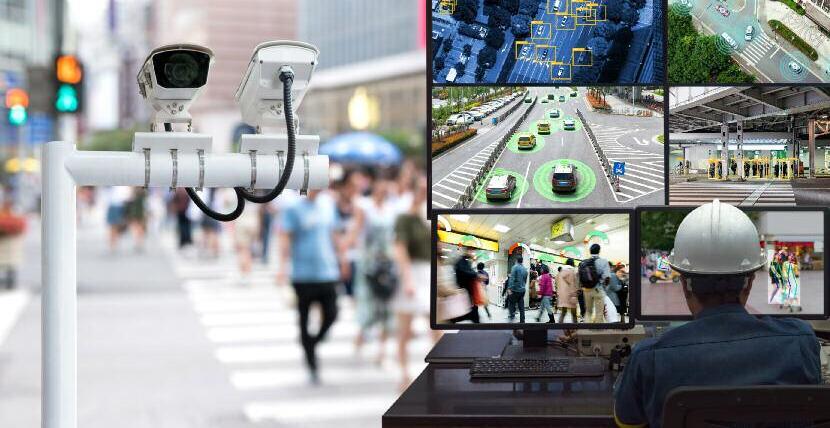


allowing users to find, reser ve parking spots and provide real-time updates on availability and parking rates










Efficient Modes of Transportation



INTEGR ATED CONTROL SYSTEMS TR ANSFORM SMART TECHNOLOGIES INTO A NEW KINGSTON SMART CITY
Smart Transportation enables safe operations across all modes and efficient movement of goods and services while performing optimally and integrating transportation control systems, sharing incident data, and facilitating emergency management for natural and man-made disasters.
Future Technologies for Smart Transportation
Smart Transportation Management Center (STMC)
STMC is centrally connected ITS platform capable of real time transportation operations, automated enforcement, planning and emergency management, in major urban centers in Jamaica, integrating JITS, TMC with UTMS, including:
• Data driven Real-time operational control: CCTV cameras, batter y backup system (UPS), variable message signs, traffic signal controller cabinets and fiber-optic cable network
• Integrated nationwide connected ITS: emergency response, enabling disaster preparedness
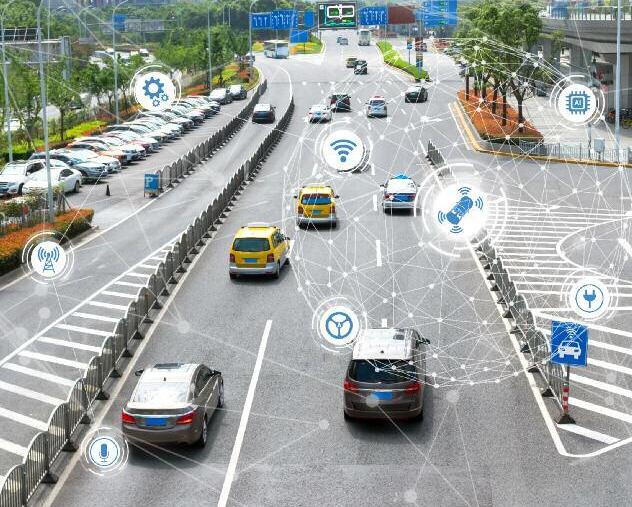

• Supports pedestrian and bike lanes using CCTV (camera and video)
• Drones for monitoring traffic and data collection in congested or disaster effected areas
• Automated traffic enforcement using CCTV traffic cameras
Smart Public Transportation System (SMTS)
Expanding JUTC smart transportation systems to build the SMTS using cameras at bus stops, bus stations and exterior of buses, to capture occupancy, timeliness, with live feed to JamaicaEye and other security applications. Features could include: dynamic scheduling, bus rapid transit (BRT) lanes; last mile and first mile solutions – bike rentals, bike lanes and predictive scheduling of taxis
Fleet Management System (FMS)
FMS with cameras, GPS and central management system for real-time tracking of fleets, for operational efficiency, safety, and cost savings from fewer trips and increased utilization Integrated with public sector fleets Expected results include: fleet streamlining and optimization for public as well as private sector fleets; reduced congestion in downtown urban areas with fleet travel restrictions; data driven and performance-based management for route planning and fleet maintenance; workflow based FMS to enhance timely deliveries as well as enhance flexibility
Smart Parking
Smart real time parking management, integrated with ITS, increases occupancy/ efficiency, reduces vehicular traffic, and improves safety, utilizing smartphones and cameras for parking lots and on street parking Parking asset mapping and management using cameras, sensors
Smart Urban Design Transforms the Physical
The smart urban design plan sets forth a high-level conceptual plan that creates an urban environment that supports the smart city technologies and applications. Based on analysis of strengths and weaknesses of the existing urban environment, a generalized urban design plan was prepared for New Kingston to illustrate proposed land use layout, circulation networks, key focal points, parks and open spaces. Various urban design techniques and detailed design options are suggested for Knutsford Boulevard corridor, the core of the New Kingston district.
PARKING AND MOBILITY
Parking should be located within a fve minute walk of a visitor’s destination. Due to its size, this objective can be achieved by well located parking facilities in New Kingston which will reduce internal trafc in search of parking space.
5 minutes walking distance from centralized parking
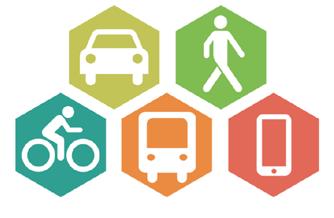
GREEN ROOF
Green roofs and walls can be added to existing and new buildings to reduce solar heat gain and create additional recreational spaces for community and private use. These spaces can also be used as urban farms for food production.
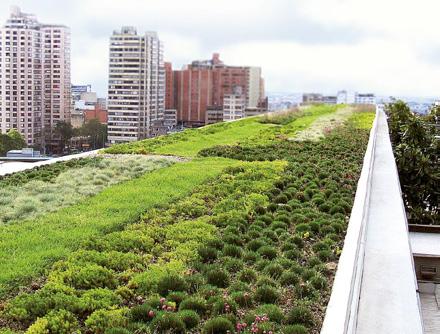
FORM BASED ZONING
Regulate development to foster specifc urban design objectives by establishing building massing, location and open space standards within zoning regulations to achieve a high quality public realm. Form based zoning should be used for any new and infll development
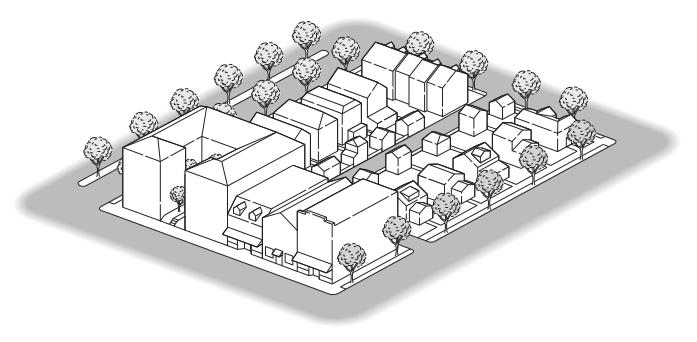
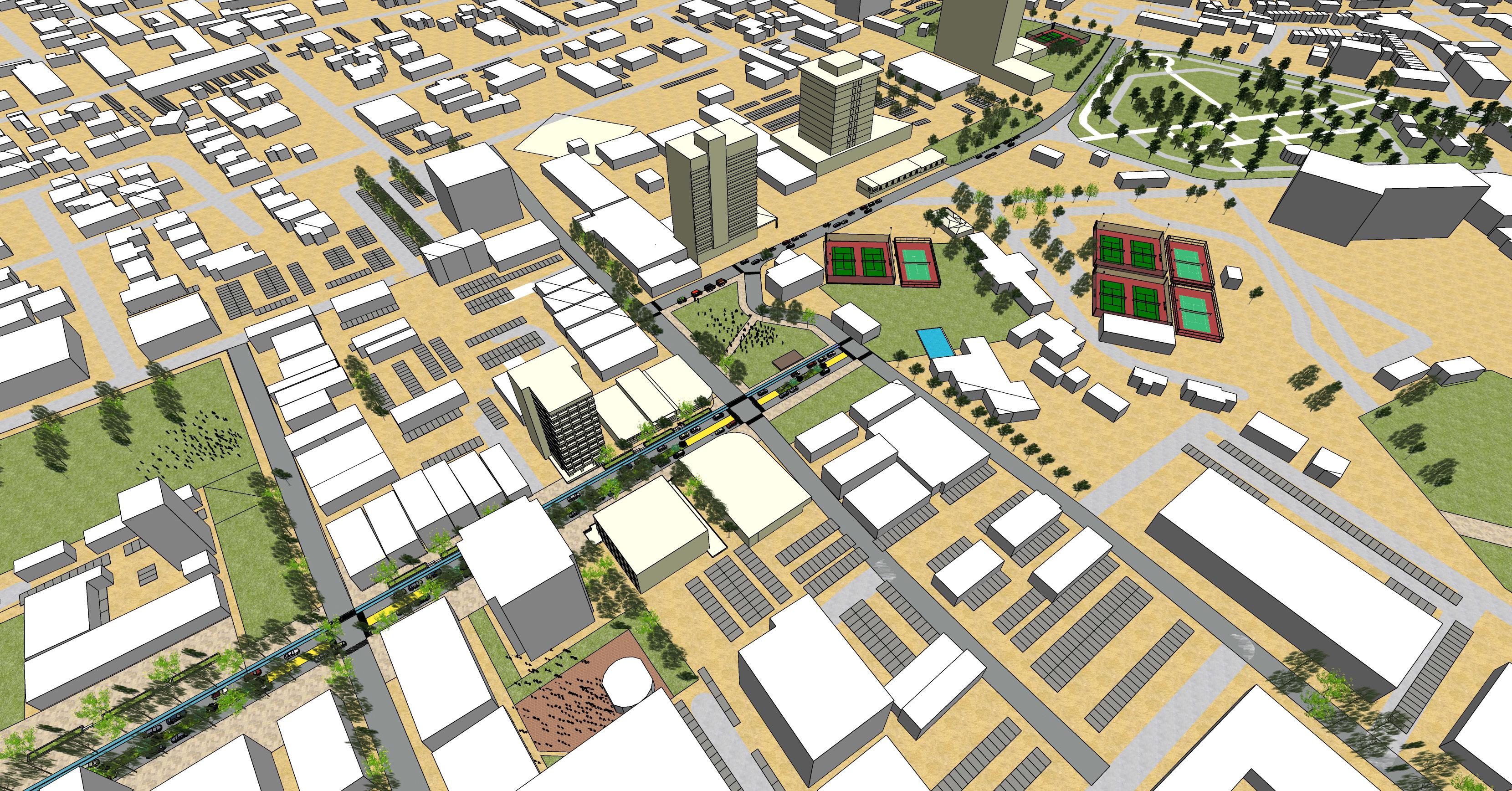
MULTI-USE SPACES
EQUITABLE STREETS
Smart mobility integrated with public transit, landscaped sidewalks and bike lanes can reduce trafc stress and create safer and pedestrian friendly streets to enhance the public realm.








Ofce parking and other open areas that are not used on nights and weekends can be used for other uses like farmers markets, book fairs, or small music performances
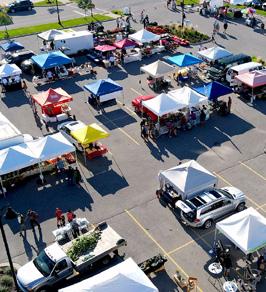
Environment to Realize the Smart City Vision
KNUTSFORD RE-DESIGN
Knutsford Blvd. redesign involves use of urban design principles to create people friendly spaces and a vibrant, safe and equitable environment
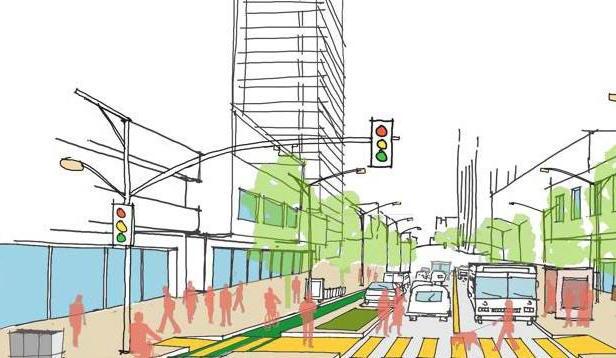

CORE URBAN DESIGN PLAN

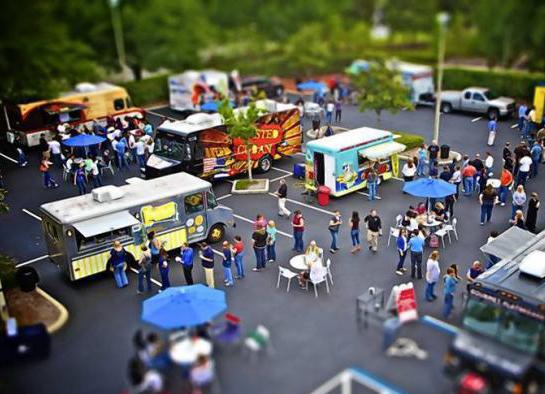
SAFE AND GREEN CORRIDOR
Connect green spaces, public and private parks and other public spaces within and around New Kingston with a network of landscaped trails and sidewalks with enhanced security to encourage walking and reduce car dependence. This approach will increase pedestrian activity and help local businesses by generating increased foot trafc for retail stores

GENERALIZED LAND USE PLAN FOR NEW KINGSTON
This map summarizes the plan for all of New Kingston established by the 2017 Provisional Development Order under the Town and Country Planning Act. It includes the entire Local Planning Area. The central space illustrated here focuses on the core area of New Kingston.
RETRACTABLE BOLLARDS
These can be used to convert a street or public space for different functions depending on time of day or day of the week. For instance, during busy shopping times a street can be closed for pedestrian use only, but late in the evening it can be open to traffic to enhance safety and security.
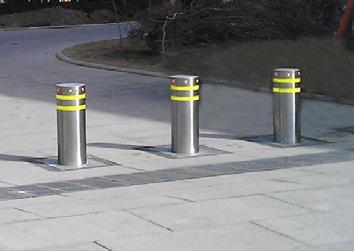

CITY SQUARE AS PUBLIC SPACE
Knutsford Blvd. should unify social and business activity rather than just move trafc. The “kink”, at its mid-point, can be used as a multi-purpose park or open space to promote this objective. Four options for the design of this area have been suggested. The one illustrated here is a public square similar to the Parade in Downtown Kingston
